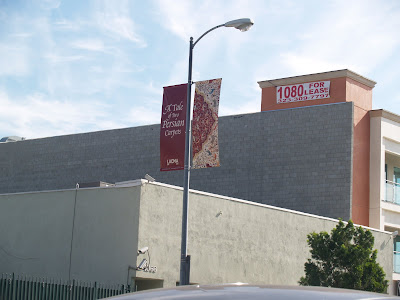

Safavid Carpets: An Analysis of Themes, Styles and Patterns
Dr. Khosrow Sobhe invites you to:
A Lecture by Dr. Jon Thompson,
Visiting Leading Rug Scholar From London
Sunday Dec. 6, 2009 From 2:00 to 4:00 pm
Place : Rug Idea
1655 South La Cienega Blvd.
Los Angeles, CA 90035
(Half a mile south of Pico Blvd. on Airdrome St. Free parking available)
This is a free program sponsored by RugIdea.com. Seating capacity is limited. Please make reservation by calling 310-860-0460
Dr. Thompson has recently retired as May Beattie Fellow in Carpet Studies at the Ashmolean Museum of Art and Archaeology and the Khalili Research Center, at the University of Oxford. He continues to teach courses at the School of Oriental and African Studies, London, and at the Victoria and Albert Museum. Dr. Jon Thompson is in Los Angeles to deliver a lecture on the Ardabil Carpet on Sat. Dec. 5, 2009 at 2:00 pm in Los Angeles County of Art Museum, LACMA.
Here is a selection of his more recent publications:
Thompson, Jon, ‘The Use of Purpura patula pansa on the Pacific Coast of Mexico’, Dyes in History and archaeology, no. 13, Royal Museum of Scotland, Edinburgh, December 1994, pp. 3–6.
Thompson, Jon and Hero Granger-Taylor, ‘The Persian Zilu Loom of Meybod’, CIETA Bulletin 73, 1995-1996, pp. 27–53.
Tapper, Richard, and Jon Thompson, co-editors and authors, The Nomadic Peoples of Iran, Azimuth Editions, London, 2002.
Thompson, Jon, ‘Looms Carpets and Talims’, in Technology, Tradition and Survival, edited by Richard Tapper and Keith McLachlan, Frank Cass, London, 2003, pp. 205–216.
Thompson, Jon and Sheila Canby, co-editors and authors Hunt for Paradise, Court Arts of Safavid Iran 1501-1576, Asia Society, New York, 2003.
Thompson, Jon, Silk 13th to 18th Centuries: Treasures from the Museum of Islamic Art Qatar, National Council for Culture Art and Heritage, Doha, 2004.
Thompson Jon, Milestones in the History of Carpets, Moshe Tabibnia, Milan 2006.
Thompson, Jon, Timbuktu to Tibet, Exotic Rugs & Textiles from New York Collectors, New York, 2008.
















